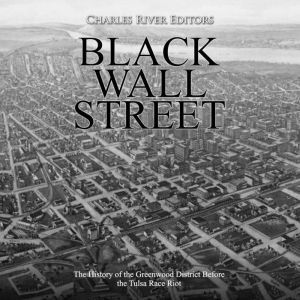

List: $6.95
| Sale: $4.87
Club: $3.47
Black Wall Street: The History of the Greenwood District Before the Tulsa Race Riot
Author: Charles River Editors
Narrator: Stephen Platt
Unabridged: 1 hr 25 min
Format: Digital Audiobook Download
Publisher: Charles River Editors
Published: 07/25/2020
Categories: Nonfiction, History, Us History, Modern History
Synopsis
Overall, Tulsa in 1921 was considered a modern, vibrant city. What had fueled this remarkable growth was oil, specifically the discovery of the Glenn Pool oil field in 1905. Within five years, Tulsa had grown from a rural crossroads town in the former Indian Territory into a boomtown with more than 10,000 citizens, and as word spread of the fortunes that could be made in Tulsa, people of all races poured into the city. By 1920, the greater Tulsa area boasted a population of over 100,000. In turn, Tulsa’s residential neighborhoods were some of the most modern and stylish in the country, and the Tulsa Chamber of Commerce produced postcards and literature boasting of the virtues of life in their modern oil city. However, as a commission report about the Tulsa Riot later pointed out, “What the pamphlets and the picture postcards did not reveal was that, despite of its impressive new architecture and its increasingly urbane affectations, Tulsa was a deeply troubled town. As 1920 turned into 1921, the city would soon face a crossroads that, in the end, would change it forever...Tulsa was, in some ways, not one city but two.”When they came to Tulsa, many blacks settled in the Greenwood area and established a thriving commercial, cultural, and residential area. Of course, the segregation was forced on these residents, and while they had fled the worst conditions of the Jim Crow South in other areas, they were not able to escape it completely. But in one way, Tulsa was different for African Americans, as black citizens of the city shared in the city’s wealth, albeit not as equally as their white neighbors. The Greenwood district, a 36 square block section of northern Tulsa, was considered the wealthiest African American neighborhood in the country, called the “Black Wall Street” because of the large number of affluent and professional residents.